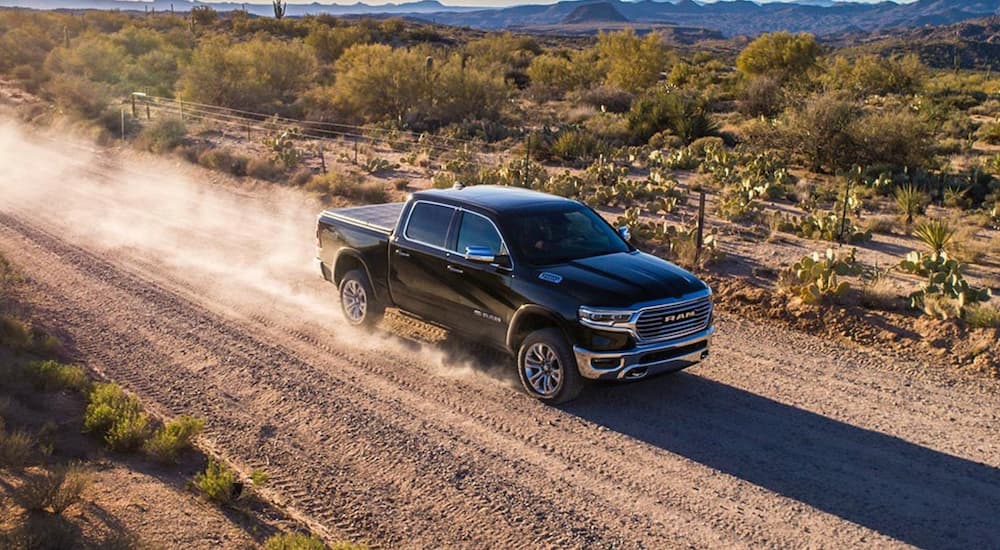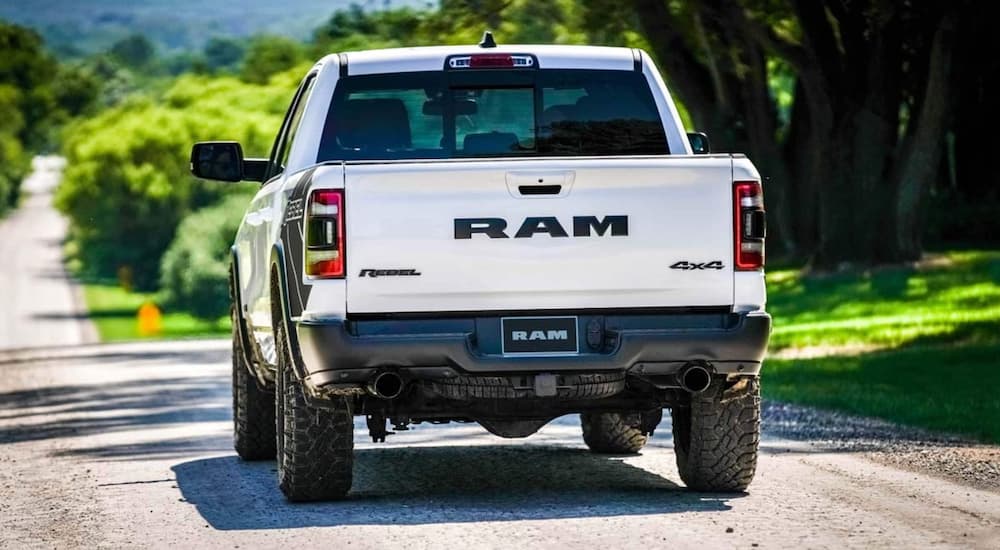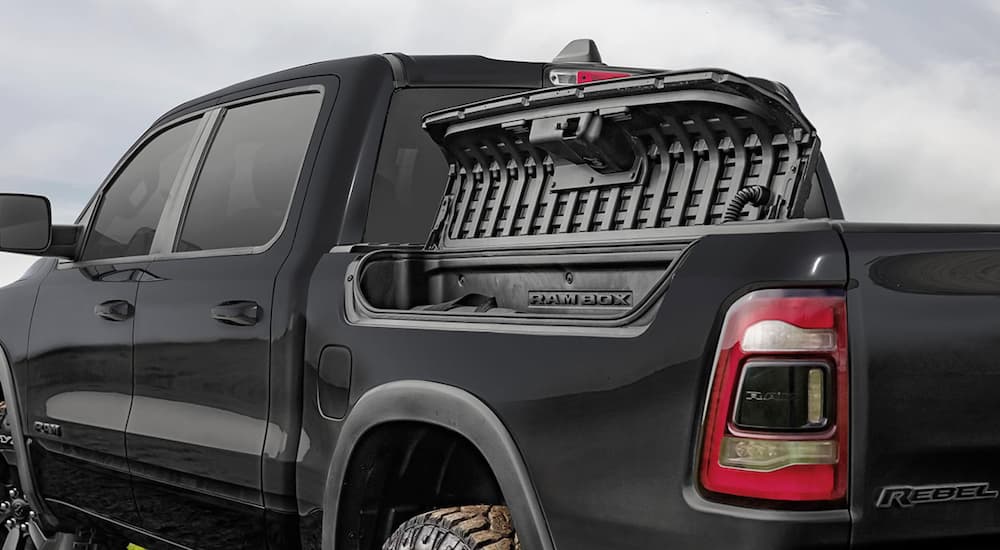The automobile gave us the freedom to explore beyond our fence posts and dirt roads, at least in the early 1900s. It replaced the trusty steed, allowing us to travel further and faster without sacrificing comfort. We see this in the revolutionary Model T, especially as drivers began customizing the automobile to better suit their towing and hauling needs. With a few planks of wood and iron, the Model T was transformed into a workhorse that met the needs of rural Americans. Essentially, the American truck was born long before we ever knew it.
This first iteration of the American workhorse is to thank for any and every search for used Ram trucks for sale because it created a new market and paved the way for automakers like Dodge, Chrysler, and Chevrolet to give drivers more. This ongoing search for “more” is often described as being insatiable, but it’s a critical component in the evolution of the truck industry as we know it today.
Without our constant search for something more or better, we wouldn’t have rugged road warriors like the Ram 1500. We wouldn’t have the most capable trucks in history offering top speeds and industry-leading payloads and towing capacities. Nor would we have innovative technology to make trailering those loads easier. This technology, specifically from Ram, showcases this constant evolution for more and our ability to get it, at least when it comes to a truck that bears the Ram name.
The Need for Better and Easier Hitching
Our insatiability is often defined by the familiar quip that we want our cake, and we want to eat it too. And who doesn’t? But in the case of trailering technology, our demand for something better is rooted in practicality. Since the idea and act of hitching to a trailer were introduced, there’s always been a fuss around the process. Older models, I’m talking those without rear backup cameras, tested a driver’s skill level and threatened the naive ears of those in the cab with every attempt to line the truck up perfectly with the hitch without using a spotter.
The age-old method of turning around in the driver’s seat to look behind you and steer the truck simultaneously worked, but we knew there had to be something better. If only there were a way to lower the truck to get it perfectly aligned with the hitch rather than adjusting the height of the trailer’s tongue. Automakers like Ram finally proved we weren’t all crazy, giving us innovative features like the available air suspension system on the Ram 1500.
The four-corner air suspension streamlines the process and offers several additional advantages. Instead of wishing you could physically lower the truck, Ram allows you to reduce the truck’s height based on the situation, like when hitching up to a trailer. Once hitched up, you can optimize the truck’s height using the suspension to deliver a smoother and quieter ride. Additionally, the suspension improves the trailer’s lifespan by evenly distributing the weight and minimizing vibrations.
The Need to See It All
One of the biggest concerns when hauling a trailer is visibility. It’s practically impossible to see around the entire rig, especially on a truck built before rear-view cameras became an industry standard. However, our need to see it all is not just a part of our insatiability; it’s a critical component of our safety. The more we see, the less likely we are to hit or run into something. It’s that simple.
Automakers like Ram respond to this need with expansive camera systems that enhance our views. For example, models like the Ram 1500 not only come with a standard backup camera but also offer cargo view cameras and a 360-degree Surround View Camera. This technology gives drivers a comprehensive view of the truck, minimizing the potential to hit obstacles, pedestrians, and other vehicles. But Ram doesn’t stop there and raises the ante with another cutting-edge feature.
Ram’s Trailer Camera Prep gives you more control over what you see. You can use the prep kit to install two auxiliary cameras on or inside your trailer. These cameras, along with the 360-degree surround view, give you a complete picture of your surroundings and inside your trailer. This eliminates the guesswork of whether your cargo has shifted in the trailer, causing instability by unevenly distributing the weight of the load, or if livestock like cattle or horses are safe inside as you navigate the road ahead.
The Need for Easier Access
Henry Ford dreamed of putting the world on wheels, but he never imagined the Model T would open Pandora’s Box. The Model T inspired American farmers and industrial workers to tailor the automobile to their specific needs, adding wooden planks and iron to transform the vehicle into a road-worthy warrior. This transformation gave rise to the pickup truck, immediately distinguished by its open bed design that made hauling cargo easier.
For decades, the truck bed remained unchanged. How could you improve on an open space meant for hauling heavy equipment, tools, camping gear, kayaks, and other items? It seemed impossible, but our constant demand for more proved otherwise. We wanted more versatility and function, even in our truck beds, and Ram answered the call.
Ram revolutionized its truck design by introducing its RamBox cargo management system. The exclusive design does something no other automaker dares––it transforms the vacant space above the wheel wells into usable storage. The RamBox system gives the entire Ram lineup an advantage over its rivals, offering drivers secure and weatherproof storage for their tools, gear, and other small items.
Fortunately, Ram’s impact on its bed design doesn’t end there. While General Motors introduced the multifunctional tailgate after a decade-long design process, Ram distinguishes itself with a unique take on the multifunctional design. Ram trucks build on the traditional tailgate but give us easier access by offering 60-40 split swing-away doors. These doors make the bed more accessible even when towing a trailer, proving Ram has yet another advantage in the industry.
The Need for More Confidence
Ram does something extraordinary by leveling the playing field among drivers towing trailers. For decades, we’ve relied on using our mirrors and twisting ourselves into pretzels to navigate a trailer into the perfect position. For experts, it’s second nature, while novices face the heat of having to constantly remember what way to turn and how to navigate in reverse without completely jackknifing. Needless to say, we weren’t happy with the reality, which led to our demand for more.
Ram gives drivers more confidence with innovative tools like Trailer Reverse Steering Control. This next-level technology simplifies the entire trailering process when navigating in reverse. By engaging the system, you can use the Trailer Steering knob to control the trailer’s direction. At the same time, the system controls the truck’s steering wheel. So all you have to do is watch the trailer on the center display to ensure it’s headed in the right direction.
Insatiability Breeds Innovation
You’ll find a lot of this technology throughout your search for a used Ram truck, which makes the process incredibly exciting. Ram’s acute awareness of what we need and our constant demand for more is something that sets the automaker apart and will forever give trucks like the Ram 1500, 2500, and 3500 an advantage over their rivals. Technology like this and Ram’s ongoing evolution of its trucks prove that insatiability breeds innovation and serves us well from behind the wheel.






